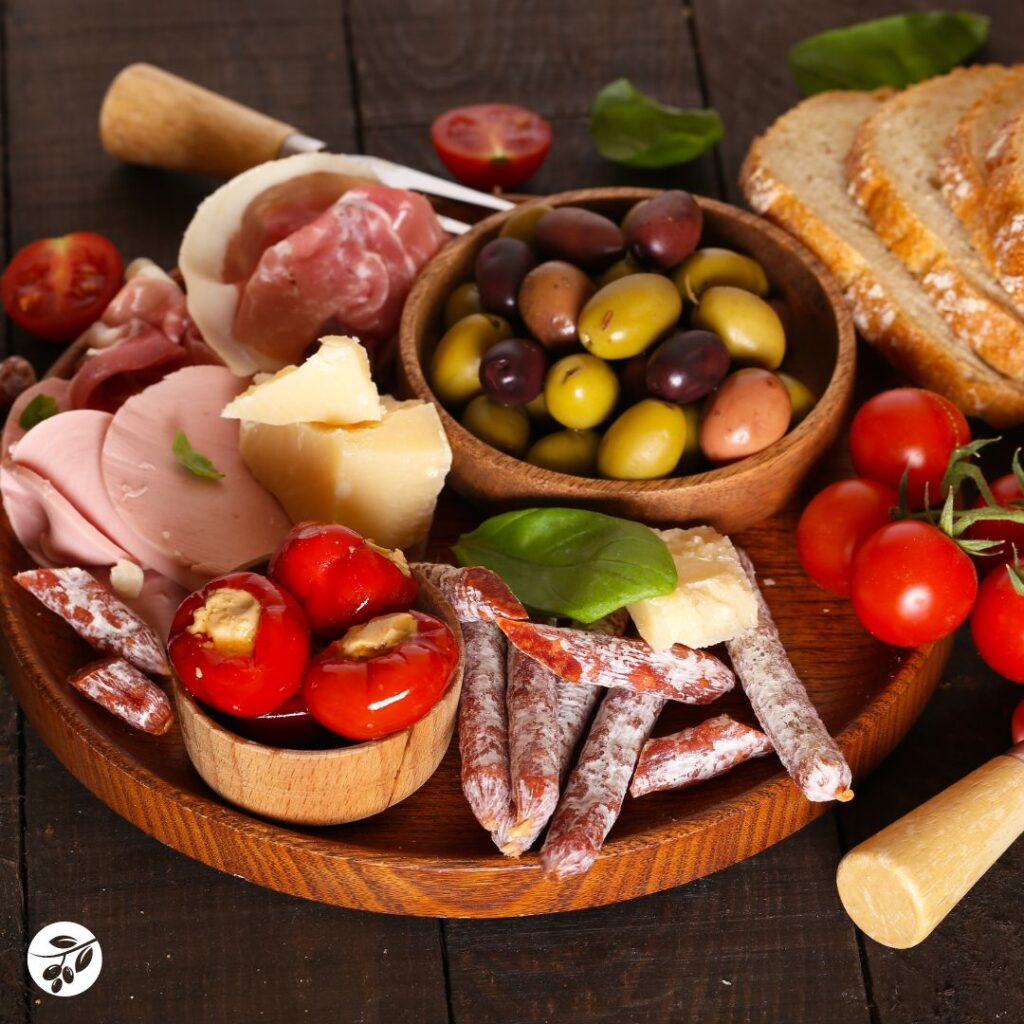
The Art of Olive Oil Food Pairing

Olive oil, often referred to as “liquid gold,” is a cornerstone of Mediterranean cuisine and a versatile ingredient that can enhance the flavor of a wide range of dishes. With its rich history and myriad of varieties, olive oil is more than just a cooking medium; it’s a flavor enhancer that can complement and elevate your culinary creations. In this blog post, we’ll explore the art of olive oil food pairing, offering tips and suggestions to help you make the most of this exquisite ingredient.
Olive Oil Food Pairing for Salads and Dressings
EVOO is the star of salads and dressings. Its robust flavor pairs beautifully with fresh vegetables, herbs, and citrus. Create a simple yet delicious vinaigrette by whisking together EVOO, balsamic vinegar, Dijon mustard, and a touch of honey. Drizzle it over mixed greens, roasted vegetables, or a Caprese salad with ripe tomatoes, fresh mozzarella, and basil.
Bread and Dips
For a classic Mediterranean appetizer, serve EVOO with fresh, crusty bread. Add a sprinkle of sea salt and a few drops of balsamic vinegar for an irresistible dip. Alternatively, mix EVOO with herbs like rosemary, thyme, or oregano for a flavorful dipping oil. This pairing highlights the fruity notes of the oil and provides a perfect start to any meal.
Pasta and Sauces
Olive oil is a key ingredient in many pasta dishes and sauces. Use EVOO to finish dishes like spaghetti aglio e olio, where its rich flavor shines through in a simple combination of garlic, red pepper flakes, and parsley. For a heartier sauce, like marinara or puttanesca, virgin olive oil offers a balanced taste that complements the robust flavors of tomatoes, olives, and capers.
Olive Oil Food Pairing with Seafood
The delicate flavors of seafood are enhanced by the right olive oil. Drizzle EVOO over grilled fish, shrimp, or scallops to add a touch of richness and depth. For a Mediterranean twist, prepare a marinade with EVOO, lemon juice, garlic, and fresh herbs like dill or parsley. This pairing works well with a variety of seafood, from delicate white fish to hearty salmon.
Grilled Meats and Vegetables
Pure olive oil is perfect for grilling due to its higher smoke point. Use it to marinate meats like chicken, beef, or lamb, combining it with spices, garlic, and citrus for added flavor. When grilling vegetables, toss them in pure olive oil, salt, and pepper before cooking to achieve a perfect char and enhance their natural sweetness.
Baking
While it may not be the first ingredient that comes to mind for baking, light olive oil can be an excellent substitute for butter or vegetable oil in cakes, muffins, and bread. Its mild flavor allows other ingredients to shine while providing a healthier fat option. Try it in recipes like olive oil cake with citrus zest or a savory focaccia bread.
Tips for Storing and Using Olive Oil
– Store Properly: Keep olive oil in a cool, dark place to preserve its flavor and prevent oxidation. Use dark glass bottles or stainless steel containers to protect it from light.
– Use Fresh: Olive oil is best used within six months to a year of opening. Over time, it can lose its flavor and nutritional benefits.
– Taste Before Using: Just like wine, olive oil can vary greatly in taste. Take a small sip to understand its flavor profile before using it in your dishes.
Conclusion for Olive Oil Food Pairing
Olive oil is a versatile and flavorful ingredient that can enhance a wide range of dishes, from salads and bread to seafood and grilled meats. By understanding the different types of olive oil and how to pair them with various foods, you can elevate your culinary creations and enjoy the rich, diverse flavors that this “liquid gold” has to offer. So, next time you’re in the kitchen, reach for that bottle of olive oil and let it transform your meals into something truly special.